墓仔(bōng-á),一個臺灣人熟悉卻又陌生的名詞,在過去臺灣以土葬為主的習俗下,不論在田裡、山上乃至海岸邊都留著這些先人最後所停駐的土堆與石碑,「墓」在我們的生活中可以說並不少見,但因為漢人「怕鬼」又「怕死」,因此在我們的教育中鮮少讓我們觸碰到這一類型的物件乃至場域,也就造成了這般「很熟悉」卻又極度陌生的情形。
而在時代的變遷中,因為經濟發展以及人們對於土地價值觀的改變,自2016年開始,臺灣各地不斷出現公墓區域遷葬的政策,尤其以都會地區更勝,幾乎每一個直轄市都主張將公墓移平,從新北市的新店第一公墓、高雄覆鼎金公墓、臺南南山公墓乃至最近的新店第六公墓、桃園龜山區第一公墓及臺北市六張犁公墓,一再地表現出現今政府機關對於土葬墓葬區的浮濫遷葬態度,而這些遷葬的理由皆是清一色的「妨礙都市發展」,實在可嘆。
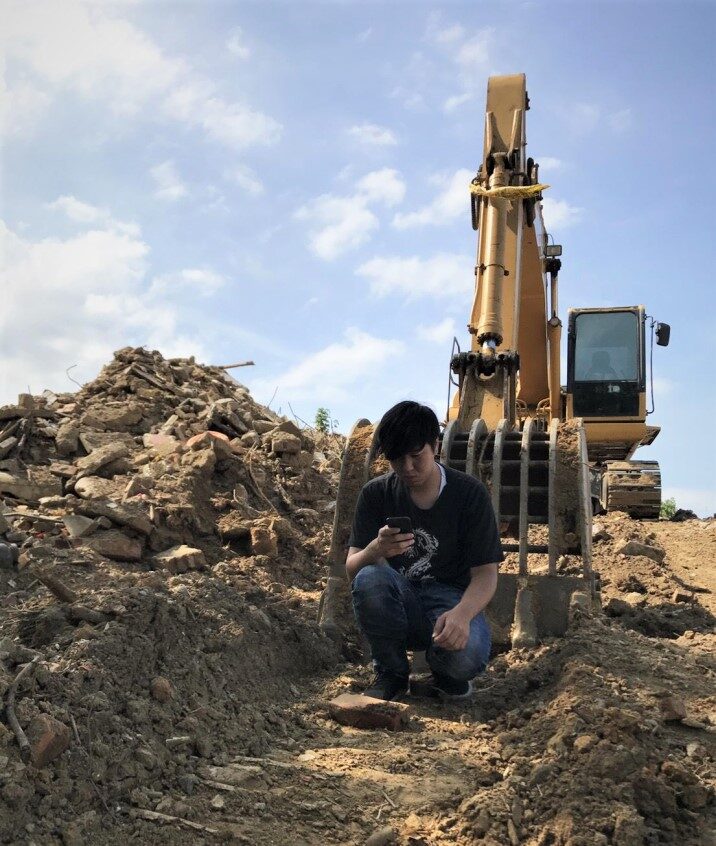 2018年6月11日,吳柏瑋於新店第一公墓動工時阻擋怪手進入。圖/吳柏瑋提供
2018年6月11日,吳柏瑋於新店第一公墓動工時阻擋怪手進入。圖/吳柏瑋提供
筆者自2017年開始接觸臺灣本地的墓葬文化保存課題,當時新店地區最古老的墓葬區(新店第一公墓)正面對遷葬危機,當時新店第一公墓被切割成兩個單元進行遷葬作業。2017年時第一單元已經遷葬完畢,許多雍正年間的墓葬就此消失,而我們投入墓葬保存行動時是針對第二單元的遷葬提出反對;在過程中我們不斷發現雍正、乾隆年間的先人墓葬,從高姓、劉姓、周姓還有一些簡姓的墓葬看出新店大坪林地區在清領開墾初期的姓氏分布狀況,其中不乏雕工精美的墓耳、墓碑,可以看出早年不同家族的經濟能力與當時的審美觀,也可以在墓區中發現刻著「鄉飲大賓」1 的日治時期墓葬,體會鄉紳備受禮遇的風華,這些都是新店自乾隆年間開始出現漢人移民後兩百餘年來所積累的成果。
任何一門墓葬的出現都彰顯了豐厚的地方文化價值,每一門墓葬都能夠反映出當時的工藝水準、經濟狀況、家族差異以及地理樣貌等。我們可以從墳墓的坐向發現到早期當地的山、水路徑,對比於現代已開發過的地理環境,更能推算出早期低度開發時的地景與水文樣貌,而我們更可以墓碑上的石雕、磚雕、花磚、繪畫乃至刻字等內容中,看見在不同時期臺灣人的工藝技術以及美學,所以說「墳墓」其實是當代人文的總結,更可以說是先人留給後世最豐厚的文化資本。
而墓葬在不同地區也會產生不同的樣貌,比如在臺南的南山公墓內,我們可以看到許多墓葬具有華麗的泥塑浮雕,相較於筆者故鄉的暗坑墓葬上鮮少裝飾且相對樸素,可見當地的泥塑師傅工藝十分精湛。這也歸功於臺南南區的沙質地質,而暗坑則因為多為木山層的砂岩地形,因此可以發現不少清領、日治時期的砂岩打石子墓碑;由此可見墓葬即便在小小的臺灣也因為地方差異而產生的多樣性。
曾經有一位外國留學生跟我們一起踏查墓葬後跟我說,這些墓葬的精美與歷史在國外是可以進到博物館珍藏的,而臺灣卻要清除,他沒有辦法理解為什麼臺灣人不愛惜自己的歷史。
這是2018年在阻擋第一公墓怪手動工時,一位居民阿姨對我說的話。
在倡議保存墓葬文化的過程中,時常引起周遭居住者的反彈,尤其在都市地區更常發生這樣的衝突,這是一場「地上居民」與「地下居民」的矛盾,但有趣的事情是,筆者發現支持全面遷葬的居民幾乎都是新移入的外地人,而非本地土生土長的在地人,反倒是在這裡世代居住的在地居民對於遷葬沒有太多的想法,對比之下由這些居住不超過60年的人來強烈要求清除已經埋葬100多年的古墓,就產生了一種「乞丐趕廟公」的荒謬感。
新店在1980年代經濟起飛後迎來一波新移民,許多中南部的居民北上打拼,進而選擇距離臺北市近且房價相對便宜的新店居住,而在這樣的情形下居住下來的「新新店人」對於原鄉的認同感遠高於對於新店本地的歸屬感。想當然,這些新移入新店的居民自然不會對於這些埋葬於此超過百年的墳墓有任何的情感基礎,而在房價不斷攀升的新店,這些墓葬就成了阻礙房價的「兇手」。
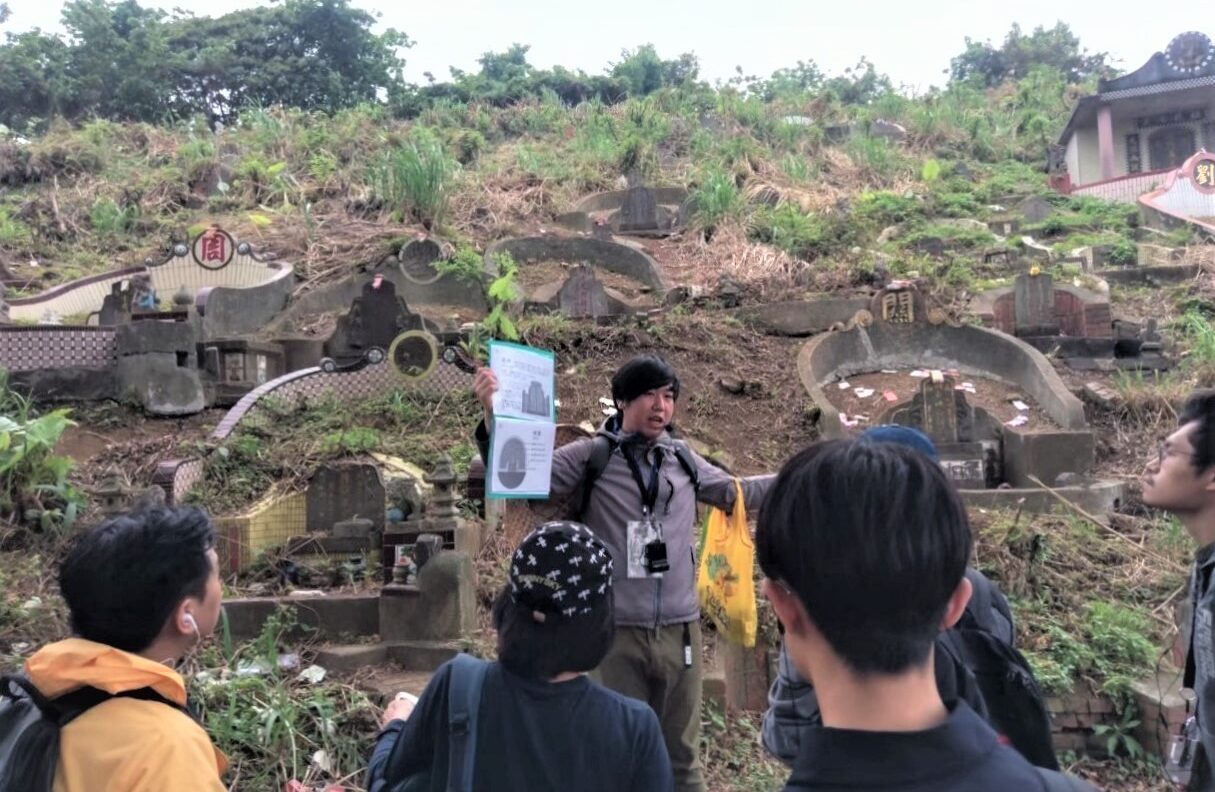
而要清除這些墓葬,最好用的理由就是以「地方發展」之名,這項理由不論在任何地方都是最容易被接受的說詞,因為這個詞彙讓居民產生了一種「會賺錢」、「房價會漲」的預期心態,尤其在以外地移民為主的都市、衛星都市,居民對於土地的價值感已經改變,當土地與住宅從「家鄉」變成了「一串數字」,所居住的地方就不再是「家鄉」,而是可以隨時獲利的商品。
而因為對於土地價值觀的改變,也產生了在地居民與自外移入的新居民在本質上產生認同衝突,外地移入的這群居民想當然的認為妨礙他們利益的墓葬是「鄰避設施」,但反而對於在地人來說這是再正常不過的「鄰居」或「祖先」,所以在地居民往往無法認同這些新移入者對於祖先「妨礙市容」的指控。
「我的祖先葬在這裡時,你還沒來,然後你現在跟我說我的祖先阻礙了發展,應該要被挖掉……」這是筆者最常跟支持遷葬者說的一句話,也是一個身為在地囡仔對於浮濫遷葬的沉痛控訴。
在2018年新店第一公墓搶救失敗之後,筆者便持續投入地方墓葬的踏查與紀錄,回到新店的第三公墓開始,從清代的墓葬到戰後的外省墓,在有限的時間中開始進行普查式的紀錄,因為墓區平時都是荒煙蔓草,只有在清明節前一周及後一個月才方便進入進行記錄,所以筆者時常戲稱清明節前後是「賞墓的季節」;而因為全面性的遷葬,能夠記錄留存這些資料的時間可以說是十分寶貴,用「向天搶時」也不為過。
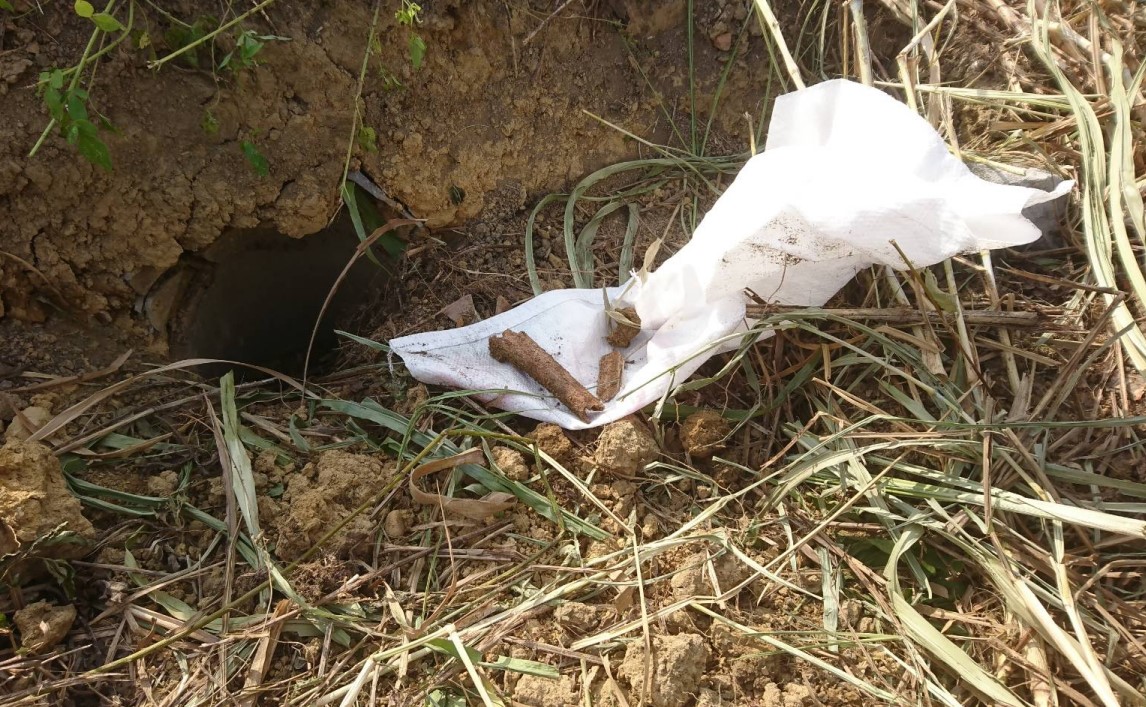 在踏查墓葬區時,要非常注意腳下是否有鼓包或空洞。但新店第一公墓粗暴的遷葬工程,卻讓祖先遺骨曝曬在外。圖/吳柏瑋提供
在踏查墓葬區時,要非常注意腳下是否有鼓包或空洞。但新店第一公墓粗暴的遷葬工程,卻讓祖先遺骨曝曬在外。圖/吳柏瑋提供
起初,筆者踏查墓葬時只有一個人,帶著手機跟簡單的水瓶就開始穿梭在數以千計的墳墓之間,時不時地要注意腳下是否出現鼓包或空洞。若看見鼓包千萬不能踩,因為那很有可能是先人的安息之地,不能踐踏先人是墓葬踏查的基礎原則,但有時候不得已要從一旁掠過,所以在墓葬的踏查過程中,會不斷地小聲說著「對不起,借我過一下」,也是挺有趣的事情;而因為臺灣漢人的移民文化,因此發展出「二次葬」的葬俗,也就是在先人以棺木下葬之後,在一定年限過去時再開棺、撿金(撿骨)而再另擇墓地下葬,也因此墓葬區中難免出現因為撿金之後產生的坑洞,往往都有一至兩公尺深,若是不慎跌落,那可真的就是體驗「與祖先同在」的感受了。
一直到了2021年,筆者帶進了第一批一起踏查墓葬的參與者,我們開始透過實際參與的方式,讓民眾開始「理解」與「認識」墓葬,帶領參與者走進墳墓山,用五感去體會有別於過去所認識的這塊土地,透過儀式感的營造,讓參與者脫離恐懼,進而在踏查記錄的過程中感受到墓葬的「文化感」與「歷史感」,最後帶領大家向墓葬區深深一鞠躬,讓原先的害怕轉變成為「尊敬」;我們發現這些參與者透過這次的行動,對於墓葬產生了新的興趣,對於「墓仔埔」多了文化價值上的解釋與理解,這是從所未有的擾動。
隨後我們開始了多次的踏查行動,從一人、兩人開始,慢慢地積累出了固定的墓葬踏查班底,戲稱自己為「古墓派」的我們,更在2022年以「墓葬文化踏查」推動了在地的社區培力行動,藉此去破解大眾對於墓葬的誤解與迷思。
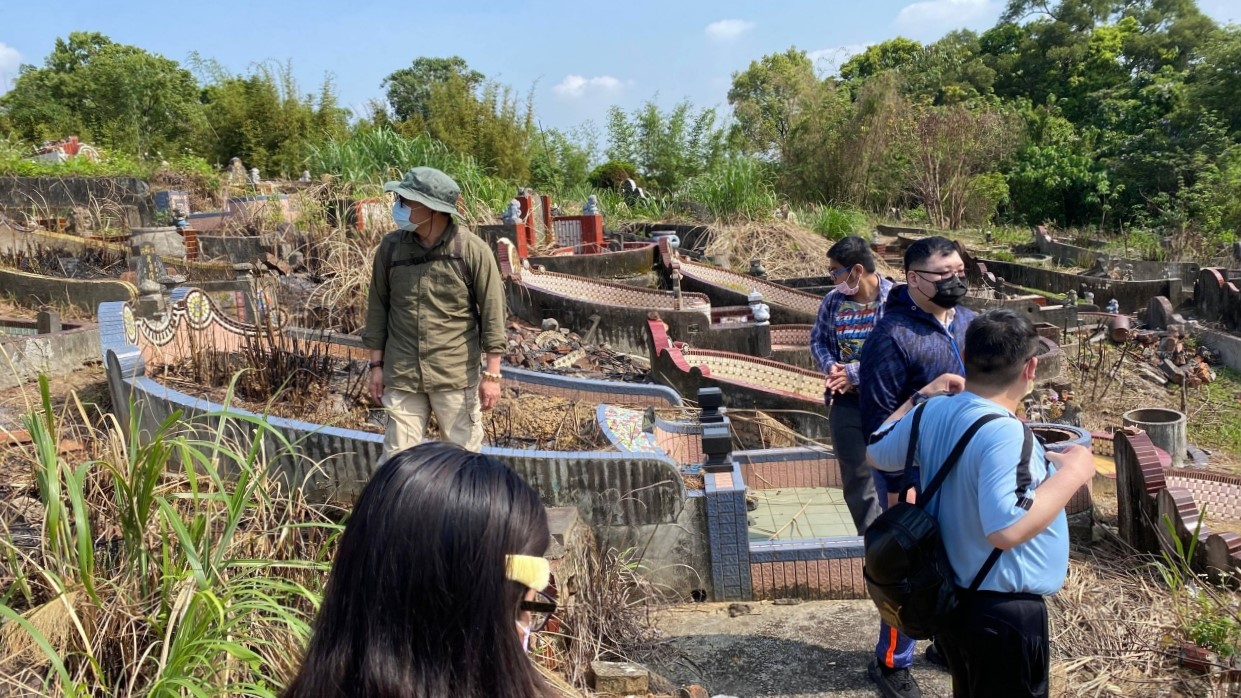 從最初的一人踏查,到後來開始帶領一批批的人認識墓葬,在踏查的過程中建構文化感與歷史感。圖為2022年的墓葬踏查行動。圖/吳柏瑋提供
從最初的一人踏查,到後來開始帶領一批批的人認識墓葬,在踏查的過程中建構文化感與歷史感。圖為2022年的墓葬踏查行動。圖/吳柏瑋提供
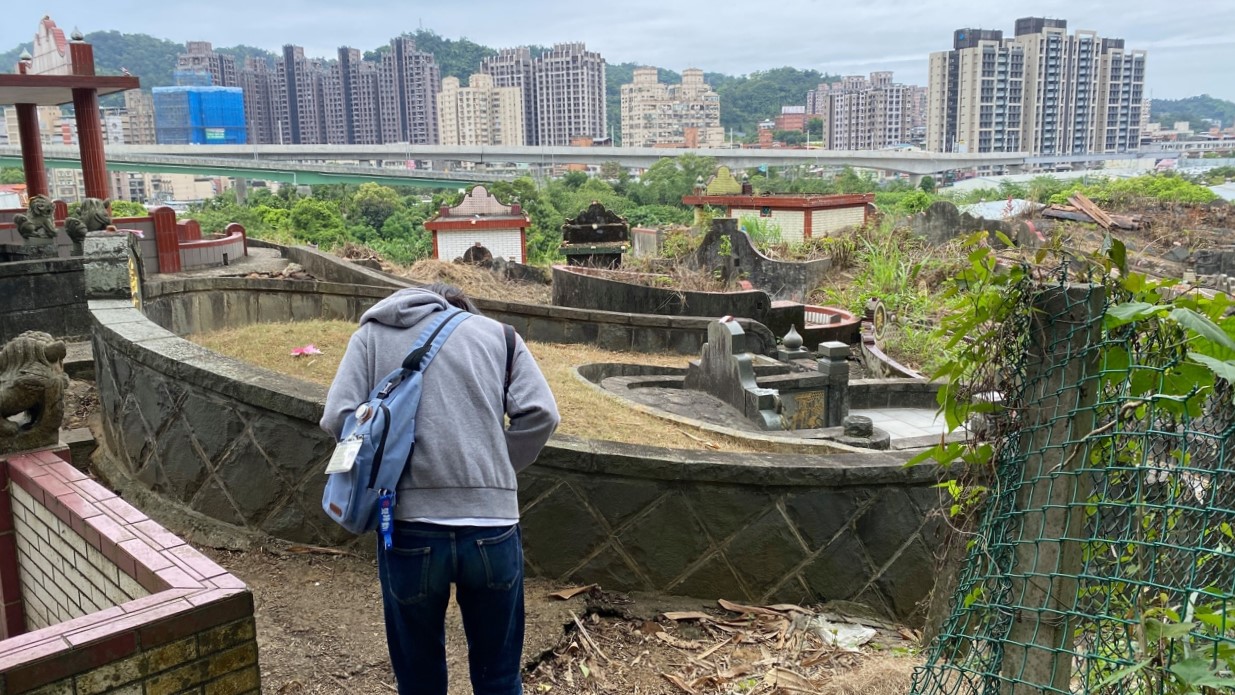 踏查墓葬時,尊重來自於對過往的理解和認識。「墓葬文化踏查」的參與者們也會在走訪後,向墓葬區深深一鞠躬,讓原先的害怕轉變成為「尊敬」,感謝先人留下的在地故事。圖/吳柏瑋提供
踏查墓葬時,尊重來自於對過往的理解和認識。「墓葬文化踏查」的參與者們也會在走訪後,向墓葬區深深一鞠躬,讓原先的害怕轉變成為「尊敬」,感謝先人留下的在地故事。圖/吳柏瑋提供
「真的祖先保佑,讓我找到你。」站在一門墓前,如此說著。
在筆者四年來的踏查過程中,這件事情一直是筆者覺得最神奇,而又最有意義的一件事情。
在2021年一次的墓葬踏查中,偶然在一個轉角處發現了一門被荒草略為掩蓋的墓碑,或許是老天眷顧,又或是古墓踏查經驗的直覺反應,當下認為這門墓葬值得紀錄,而結果也確實沒有讓人失望。這是一門墓耳雕刻精緻的日治時期墓葬,上方刻著「詔邑 廖媽曾氏笑之墓 昭和己夘年六月 男二大房立石」字樣,從這門墓葬初步判定是曾姓女子嫁給廖姓家族的墓葬,而上方的「詔邑」指的就是「詔安」,而「昭和己夘年」的「夘」(同「卯」)字是以早期墓葬上常見的異體字刻法,可見這是一門建於日治時期的昭和14年(1939)的墓葬;本來筆者以為墓葬踏查的收穫就是如此之時,在後來一次調閱日治時期戶籍資料中,發現了這門墓葬居然是筆者查某祖(祖媽)的阿嬤,是真真實實的「公媽」,雖然是外姓祖先,但卻讓筆者十分感動,是源自於血緣中那份「拼圖」被接合的激動感。
當下筆者深刻的體會到,踏查墓葬文化除了是對於地方家族遷移史、發展史的深入研究,更是對於「自我」的探索。
 2021年4月在墓葬群中,偶然發現的祖先安葬之所,牽起了血緣與在地的連結。圖/吳柏瑋提供
2021年4月在墓葬群中,偶然發現的祖先安葬之所,牽起了血緣與在地的連結。圖/吳柏瑋提供
 2021年,尖山墓葬踏查中,參與者的墓葬踏查筆記。圖/吳柏瑋提供
2021年,尖山墓葬踏查中,參與者的墓葬踏查筆記。圖/吳柏瑋提供
「文化」說白了其實就是關於「我是誰?」、「我在哪?」與「我為什麼在這裡?」三個問題,而先人透過墓葬,把最在地的資訊留給了我們。從墓碑上我們能知道祖先從何而來,可以知道祖先怎麼來到這裡,如何在這個地方生根、發芽,這些都是組成「我」的重要元素,透過這些墓葬所透漏的故事,重新建構起了「我」與「臺灣」這片土地的連結。